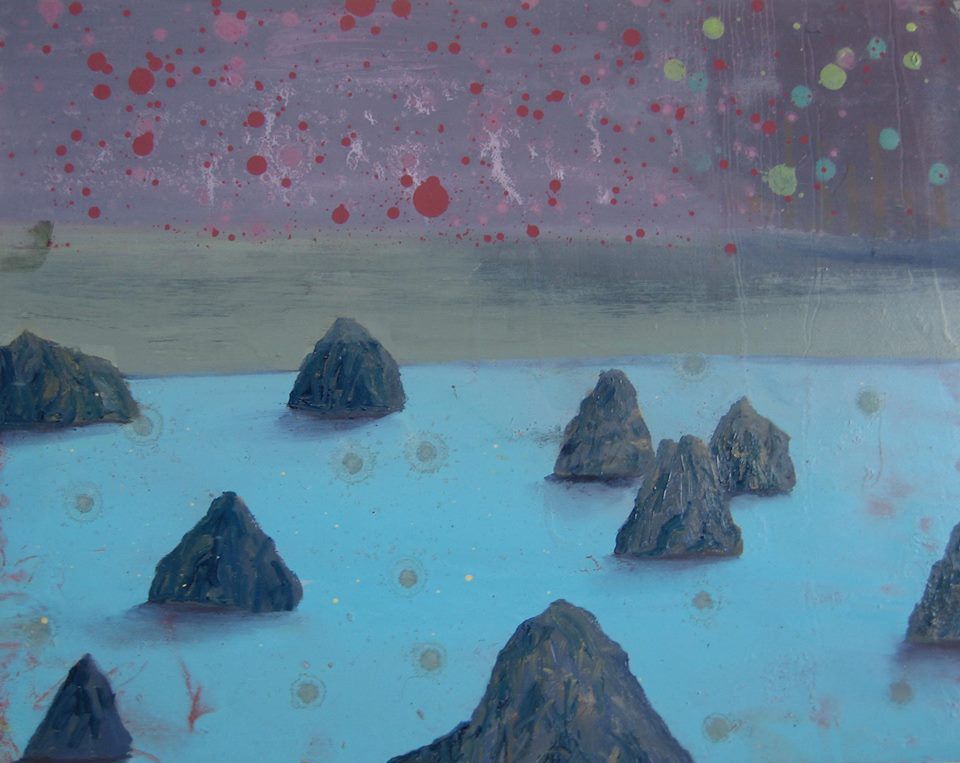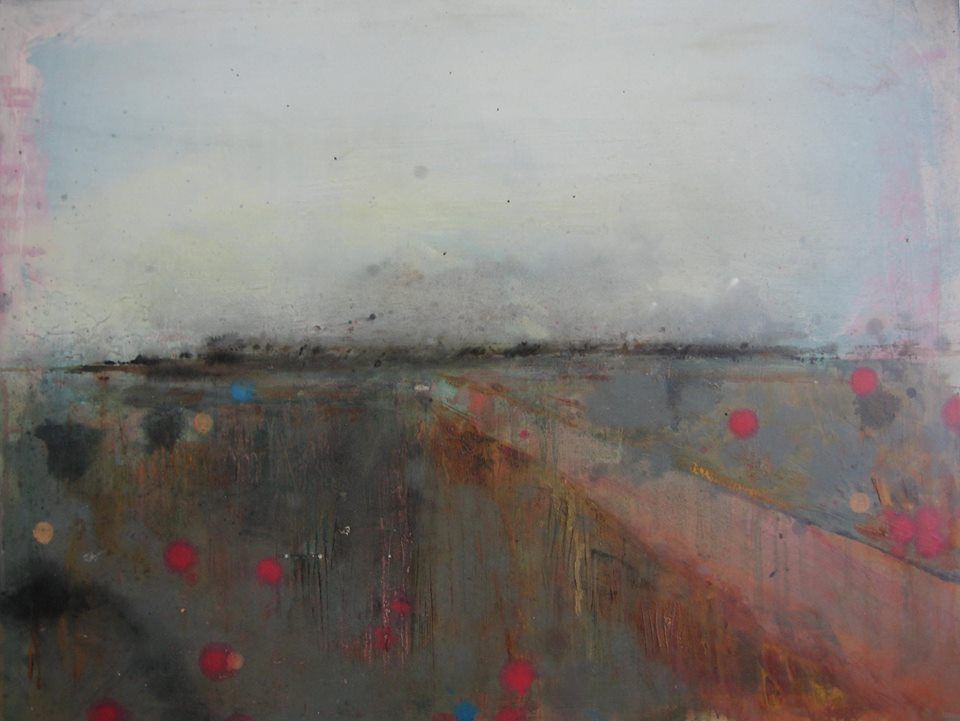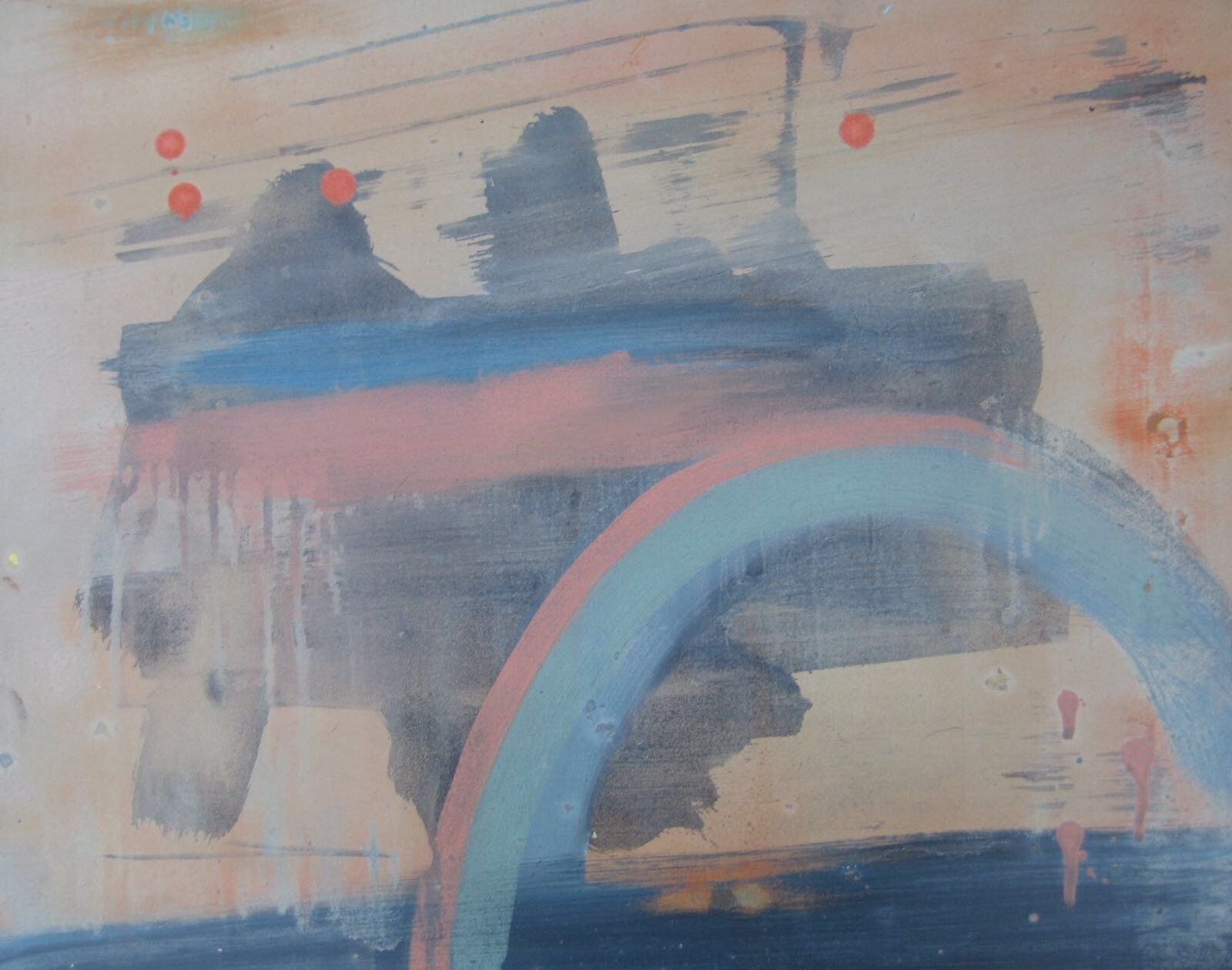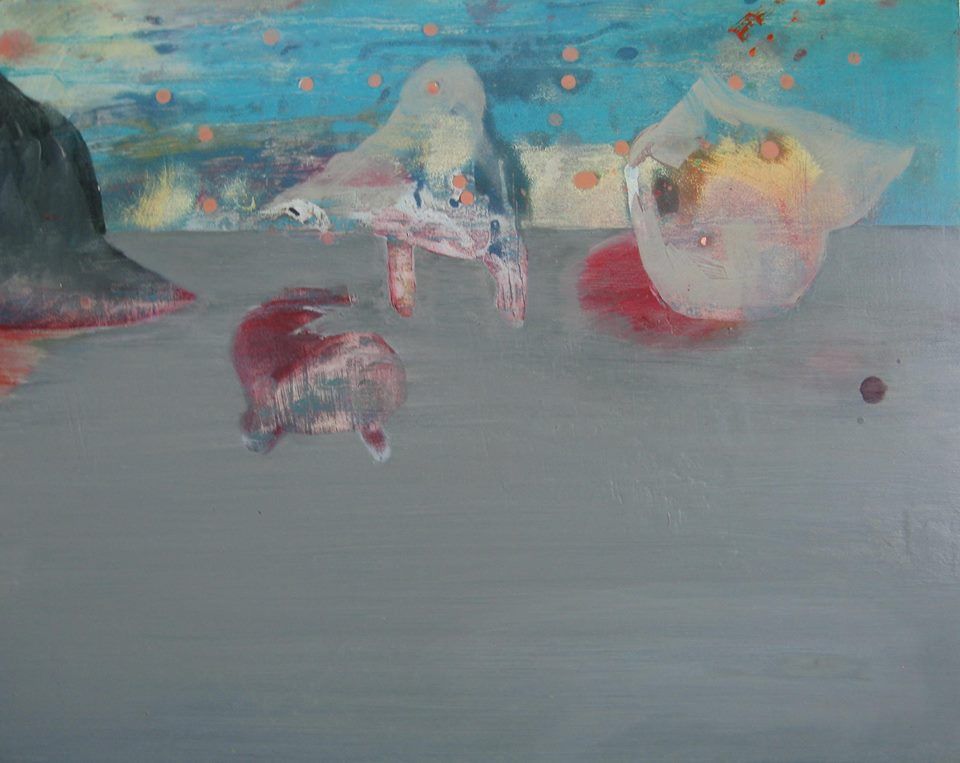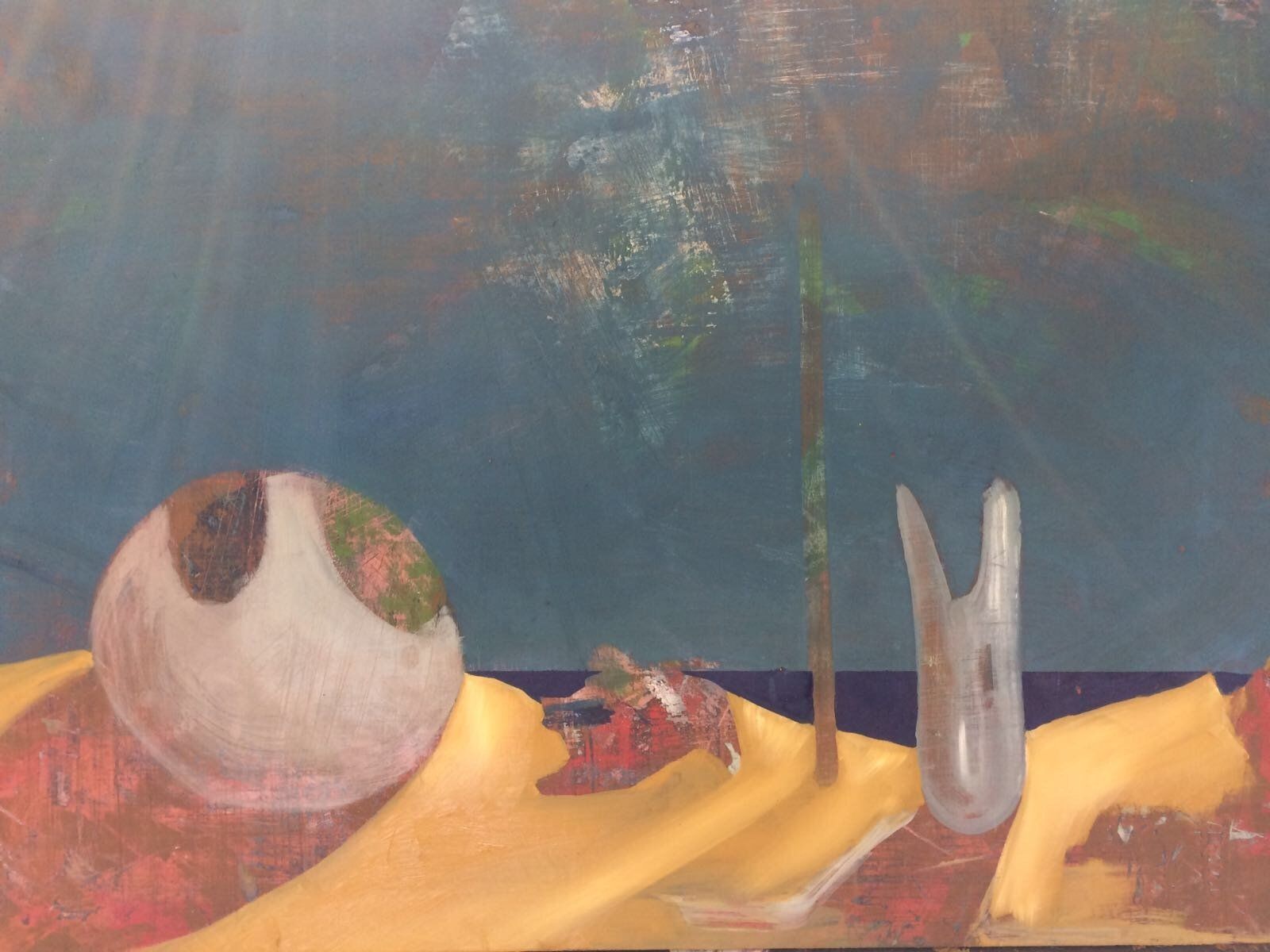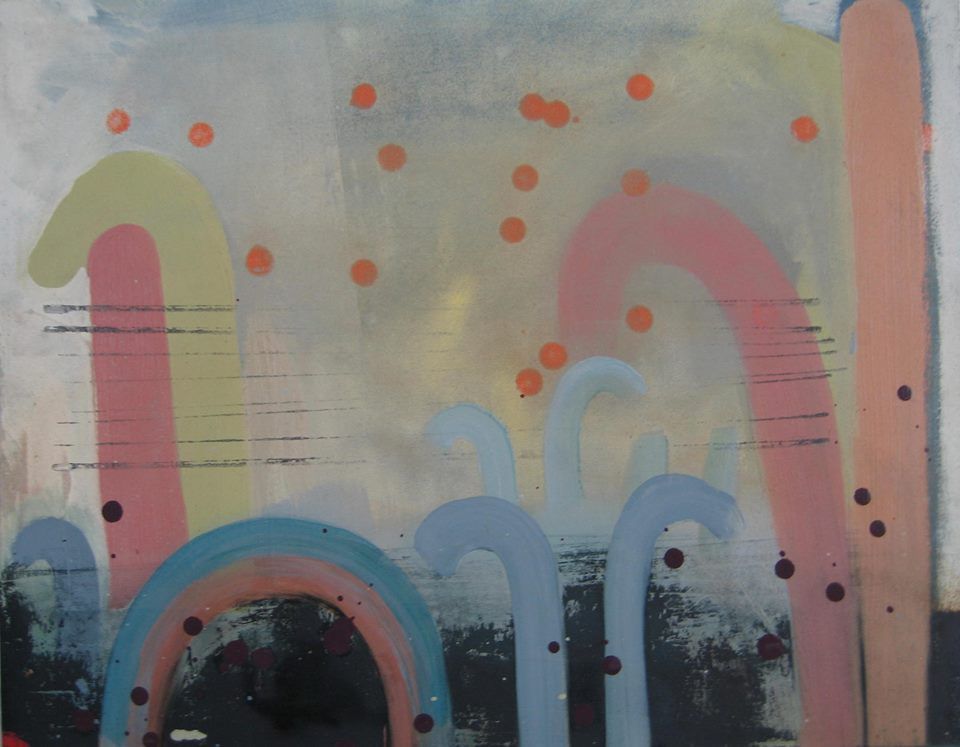“John Fitzsimons's latest exhibition, entitled 'Projections', takes a darker and more foreboding turn than his previous work to date, reflecting the current international political climate and associated nervousness about the path that lies ahead.
Fitzsimons's 2012 collection, 'Pyramid', showcased an artist exuding confidence and self-assuredness. Sharp, geometric lines merged to form harmonious, triangular patterns which boasted bold, vivid blocks of primary colours. This was Fitzsimons's personal homage to the 'golden age' of Egyptian civilisation whereby 'equality, balance and peace' were at the centre of society. Of that collection Fitzsimons spoke of his intention to recreate this clarity and harmony in his work. At the time Fitzsimons was taken with an observation made by the Egyptologist Dr Carmen Boulter who remarked that the Egyptians would most certainly have viewed society today as a 'Dark Age'.
If Fitzsimons touched on this concept of a 'Dark Age' during this earlier collection he returns to it here in this present work with a fervour, given the present political climate. The sudden shock of both the success of the Brexit campaign in Britain and also the Trump coup has rendered an acute anxiety in the current work of Fitzsimons where the artist, very much aware of the dark elements at work to create such a reality; the rise of Far Right sentiment, racism, xenophobia and homophobia, considers the potential outcome and perhaps inevitability of the course, or Apocalyptic path, that humankind has been set upon.
Fitzsimons adopts his characteristic style of geometric lines in this work but applies this style in a decidedly different way. The definite, clearly designated geometric lines have given way to blurred lineation, indicating a new ambiguity and uncertainty to this new work. Fitzsimons had played with this blurred, hazy technique in his most recent collection in 2014 entitled 'Recollections', an atmospheric work that was the artist's very personal consideration of the concept of memory and home using the motif of the window pane. While there was an ambiguity to this collection given the hazy, dreamlike quality of the work, the feel of the work was calm and contemplative and in no way threatening. 'Recollections' reflected the artist's personal musings on his memory and past. This was an introverted work that told of one individual's solitary experience. This collection however, a series of surrealist landscapes, is more expansive and tells of the collective experience of mankind rather than that of the individual. Fitzsimons again plays with light and colour in this work to create a sense of ambiguity. 'Recollections' used this technique to convey a dreamlike quality to the work with the viewer being provided a glimpse into the artist's personal dreamscape. This new work does not deal in the medium of dreams however, but rather in the medium of premonitions. The collection presents us with a series of ominous, hypnagogic premonitions into the future rather than the sense of delving into the past.
Time and time again Fitzsimons's foreboding landscapes feature paths or roads that lead the eye to an ambiguous, dark destination possibly a scene of war or environmental catastrophe. In each piece the artist deliberately distorts and blurs this distant space; the haze and confusion creating a sense of uncertainty and, in turn, anxiety at the viewer's inability to decipher what it is that lies ahead. This recurring motif of the single road or path is central to Fitzsimons's new work conveying an acute sense of the artist's anxiety of what he sees as the inevitability of the road ahead- the individual's lack of choice and autonomy and feeling of a predestined fate-a road that not one of us can leave. Some of the works give a sense of a 'Dark Age' looming ahead in the distance of the horizon, whilst some show this 'Dark Age' as being very much a present reality. Modern society lauds capitalism and materialism, a throwaway culture where sustainability is a concept alien to many and there continues a refusal by many to recognise the scientific proof of global warming. The outcome of which is the desecration of nature conveyed in this work. Pollution and disintegration are represented through murky dark polluted colours; brown, yellow, orange and rust shades along with the colours of rot and ooze. Oft times we are faced with a barren landscape that lacks green vegetation while we witness a dark grey sea devoid of life. Animal and fish carcasses appear intermittently throughout the work. These are hauntingly distressed paintings of landscape. In one telling piece, the artist conveys a human skeleton submerged under water, one eye half open, suggesting either a subconscious awareness or an intentional 'half-seeing' of our reality/ fate.
As is typical of Fitzsimons's work there is a duality at play. Though bleak, these images are in no way devoid of hope. At times there is fresh blue water, lush vegetation and smoke on the horizon, all of which point to evidence of life. In fact, Fitzsimons's work here is a testament to the resilience of human life. Despite the artist's apocalyptic prophecies, human life, represented in the form of orb-like spherical shapes, continues. The artist's use of the circular shape is telling given that the circle is a universally divine and sacred symbol that represents the infinite return of energy in the patterns of the seasons and time. These spherical shapes appear in varying colours from green (representing the colour of life, renewal, nature, energy, growth, fertility and harmony) to red (representing human life force, vibrancy, passion, vigour, radiance, fertility) to blue (representing peace, order, wisdom, faith, intuition) to yellow (hope, happiness, positivity, energy, optimism, enlightenment). These richly vivid coloured orbs are scattered throughout much of the work and offer an unflagging vibrancy that transcends the bleak surrounds.
Fitzsimons's dystopian 'projections' into the future may well predict inevitable dark days ahead but, for the artist, the indomitable resilience of the human spirit will triumph over adversity.”
Paula Clarke






